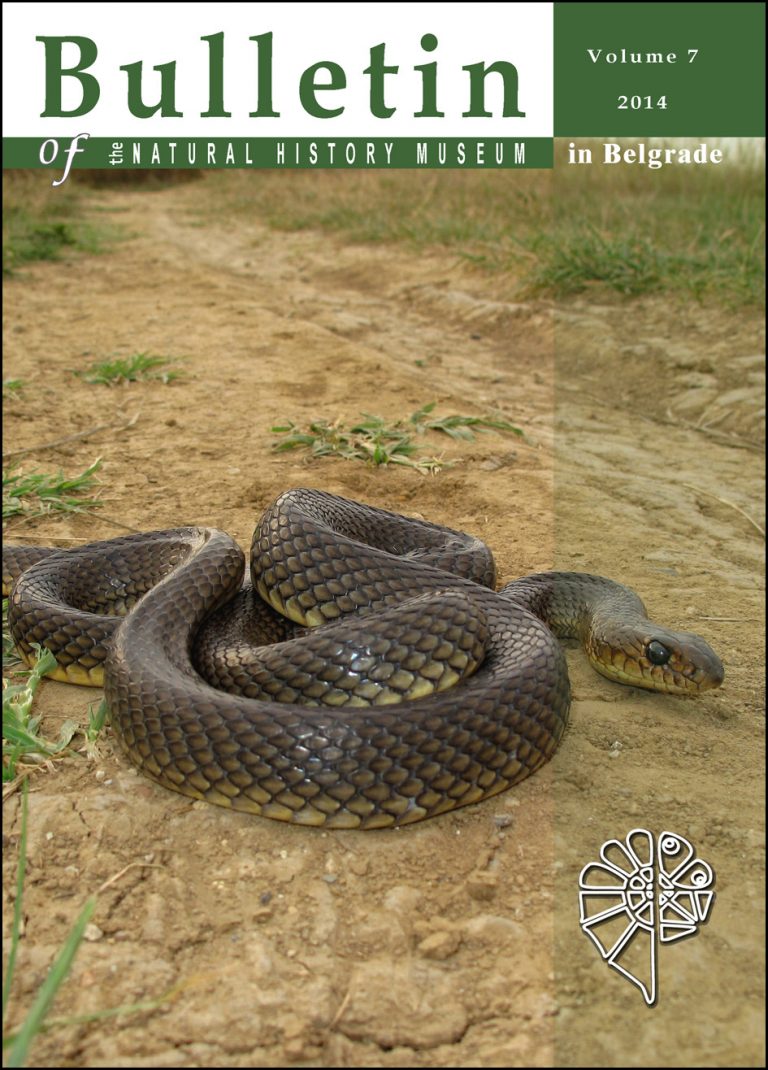
Geology
Maran Stevanović, A.
Conservation of Paleontological Heritage in Serbia: from Philosophy to Practice
Serbia has a rich paleontological heritage that includes both, fossiliferous sites and fossilized remains and traces of once living plants and animals. Their study allows paleontologists and geologists to understand and interpret the evolution of life on Earth, ancient environments and past climates, to establish the age of rocks and to correlate rock units in different part of the world. Fossiliferous sites and fossils are not only an integral part of geodiversity and geoheritage but also important component of our national natural and cultural patrimony. Criteria for evaluation of potential paleontological heritage are suggested along with required conservation strategy in order to ensure that these phenomena, inherited from the past will still be with us in the future.
Key words: Paleontological heritage, conservation strategy, Serbia
Biology
Tomović, G., Vukojičić, S., Mirjačić, K., Radović, A., Niketić, M.
Genus Viola L. (Violaceae) in Serbia. Collections of the Natural History Museum in Belgrade and The Institute of Botany and Botanical Garden “Jevremovac”, Faculty of Biology, University of Belgrade
This paper presents the information on specimens of the genus Viola L. from Serbia deposited in two collections: Herbarium of Natural History Museum in Belgrade (BEO) and the Herbarium of the Institute of Botany and Botanical Garden “Jevremovac”, University of Belgrade (BEOU). Overall, 1936 herbarium sheets were examined of which 902 specimens are stored in BEO and 1034 in BEOU. The catalogue of herbarium specimens for 27 plant taxa of the genus Viola from Serbia is presented. Distribution maps for all the investigated species/subspecies are also provided.
Key words: Viola, vascular flora, distribution, Serbia, herbarium collections
Zlatković, B., Nikolić, M., Drndarević, M., Jovanović, M., Niketić, M.
Revision of the Genus Hypericum L. (Hypericaceae) in three Herbarium Collections from Serbia
This paper provides information on herbarium specimens of the genus Hypericum represented in several herbaria from Serbia. The reviewed collections include: Herbarium of Natural History Museum in Belgrade (BEO), Herbarium of the Institute of Botany and Botanical Garden “Jevremovac”, University of Belgrade (BEOU), and Herbarium of the Faculty of Sciences and Mathematics, Department of Biology and Ecology, University of Niš (HMN). Total number of 1108 herbarium sheets was examined, including 426 specimens stored in BEO, 484 in BEOU and 198 in HMN. The review of revised herbarium data for 18 plant species of the genus represented in the flora of Serbia is presented. Their distribution in Serbia is reconsidered according to obtained herbarium data and shown in the maps.
Key words: Hypericum, herbarium material, revision, Serbia, distribution
Tomović, Lj., Ajtić, R., Ljubisavljević, K., Urošević, A., Jović, D., Krizmanić, I., Labus, N., Đorđević, S., Kalezić, M. L., Vukov, T., Džukić, G.
Reptiles in Serbia. Distribution and Diversity Patterns
In this paper we present confirmed and potential distribution ranges of all native Serbian reptile species. The information provided herein presents the combination of the newly collected faunistic data and previously published records. The centres of reptilian diversity in Serbia were evaluated, in order to focus future conservation efforts on the regions of particular importance for the protection of this understudied group of animals. We found four main centres of species richness: three in Metohija and one in Šumadija, with 17–21 species per 50 × 50 km square. Analysis of the similarity of species composition in different regions of Serbia showed that South-eastern Serbia is the most distinct from other regions of Serbia, due to high number of Mediterranean species, with two being found exclusively in that region (E. quatuorlineata and P. najadum). Metohija is also very distinct, due to the highest number of species and significant number of specific (Mediterranean) faunal elements. The remaining geographic regions are grouped into three clusters, with Kosovo-Southern Serbia cluster being especially distinct in the terms of species richness and the presence of Mediterranean species. We also compared Serbian herpetofauna with those in other Balkan countries, considering species’ numbers and zoogeographic herpetofaunistic elements. Serbian herpetofauna is closest to the Romanian. Zoogeographic analysis showed that reptilian fauna of Serbia consists of eight chorotypes, with the Eastern-Mediterranean (nine species) and Southern-European (five species) as the most dominant ones.
Key words: reptile diversity, distribution, zoogeography
Karapandža, B., Paunović, M.
Novi predlog standardne srpske nomenklature slepih miševa (Chiroptera) obuhvaćenih sporazumom EUROBATS
In this paper a new proposal of standard Serbian nomenclature of bats is presented. It is based on previous proposals of Yugoslav and Serbian standard nomenclature of bats and on three main principles – biological adequacy and comprehensiveness, linguistic adequacy and linguistic practice. This proposal includes names of 54 bat species mostly covered by EUROBATS Agreement on the Conservation of Populations of European Bats. Besides the species’ names, the proposal also contains names of 21 higher taxons – 1 order, 6 families and 14 genera. Every proposed name is justified on the basis of state-of-the-art scientific knowledge and elaborated in details. We hope that new proposal of standard Serbian nomenclature of bats will be broadly accepted and used in future expert, scientific and popular literature in Serbian language as well as by general public and media, contributing to a better knowledge on bats and thus their conservation.
Key words: Chiroptera, bats, zoonimes, standard Serbian nomenclature


